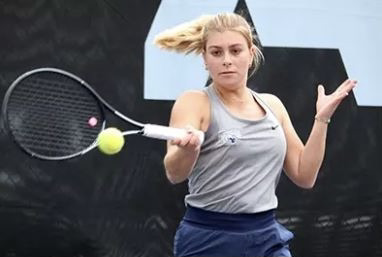Students premiere original radio shows on ds106 Radio
4 min readBy HOPE RACINE
Have you ever wanted the chance to ask Taylor Swift about the juicy details of her dating life? On Monday, March 18, students of Professor Alan Levine’s Digital Storytelling class got that opportunity.
It is important to note, however, that Swift may not necessarily have been aware of the interview.
As part of the Digital Storytelling class, students are required to produce radio segments for ds106 Radio, a live stream radio channel that is developed exclusively by students and monitored by Levine. As part of the ds106 Radio project, students aired their group projects on Monday night.
The students broke into five groups, in which they came up with original content and themes for their radio shows. One group focused on a mock interview with Taylor Swift. By cutting audio from various interviews, the group was able to piece together responses in Swift’s own voice. The program- titled “Serial Dater”-also featured mock interviews with other celebrities connected to the famous singer, such as John Mayer, Taylor Lautner and Harry Styles.
Other groups produced programs such as “The 5th Dimension,” which was loosely based on the Twilight Zone. The group also employed audio clips from various movies to tell an original story, as well as having a mock radio show where a DJ asked callers questions like “would you rather fight an alien or a robot from the future?”
Another group aired a program called “Blast from the Past/Into the Future,” which followed a time traveling couple who splits up to explore the past and the future. The group was comprised of two girls; however, there were multiple characters within the story. The girls provided all the voices themselves, including the male’s voice, and edited their pitch accordingly using editing software.
Not all students had to use software to edit their voices. One segment, entitled “Digital Dynamite,” explored the various talents of the group members, and how a small spark on interest in their fields led to a lifelong passion. The hobbies ranged from sewing and costume design to a love of the Chinese language.
One member, junior digital media studies major Amber May, discussed how she fell into the field of voice acting. She told the story of how, at a young age, she discovered her talent for imitating cartoon characters, which blossomed into a lifelong goal.
May and her group members recorded their parts separately, and then May put them together.
“That part was fun for me because I plan to go into audio engineering and radio broadcasting after I graduate,” said May. “The story part was also fun for me because I’m also a voice actor.”
Another group centered their program on how much they hate group projects.
“We pretty much agreed from the start that group projects are terrible for different reasons,” said Karissa Herrick, a senior math major.
“Suddenly, we had our idea. So each of us became different characters based on the worst people that could be in a group project,” Herrick said.
Herrick and her group members transformed themselves into the stereotypical nightmare group members: a control freak, the late person, the one who does the bare minimum, the useless person and the kid who won’t stop talking.
Students were given three weeks to complete the assignment, though Herrick’s group spent around nine hours in production.
“It’s difficult because you listen to the same thing over and over again, and you have to try to get a fresh take each time you listen to it, as if you were hearing it for the first time,” said Herrick, who was relieved to finally finish the project.
Throughout the livestream, which took place from 8 p.m. to 11:30 p.m., students and listeners live tweeted their thoughts on the programs, using the #ds106radio tag. Levine moderated the event, introducing the various groups and performing a question-and-answer session with the group members after their programs. In addition to interviewing, he tracked the number of listeners throughout the night.
“Worldwide (except for you, west coast, you guys are slackers!)” Levine tweeted at one point, attaching a screen capture of the listeners. The program peaked at almost 40 listeners, including several listeners from Brazil, Canada, New Zealand and Australia.
“I’m so incredibly impressed by the quality of these radio shows,” Levine announced halfway through the night, a sentiment that seemed to be echoed by listeners and students alike.
“I really enjoyed this class,” Herrick said. “I find myself publishing work that I am really proud of and that in itself is extremely rewarding.”



